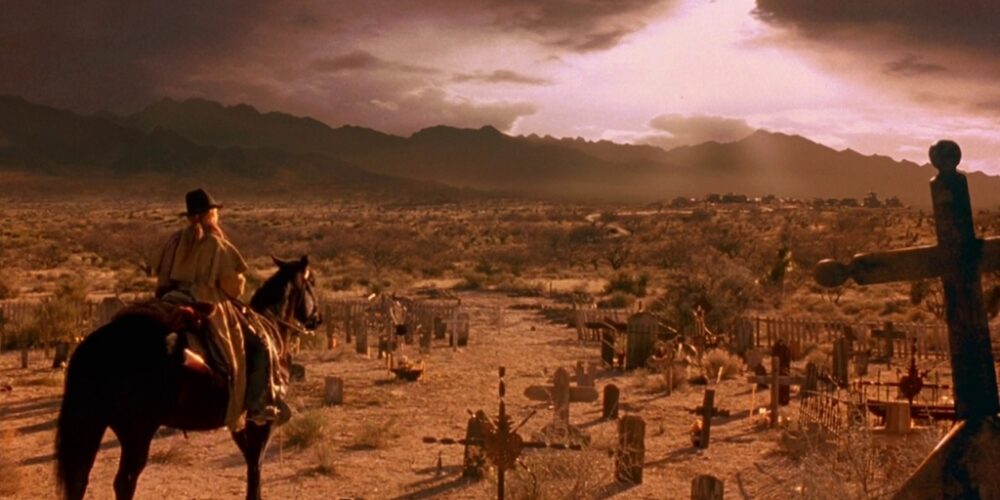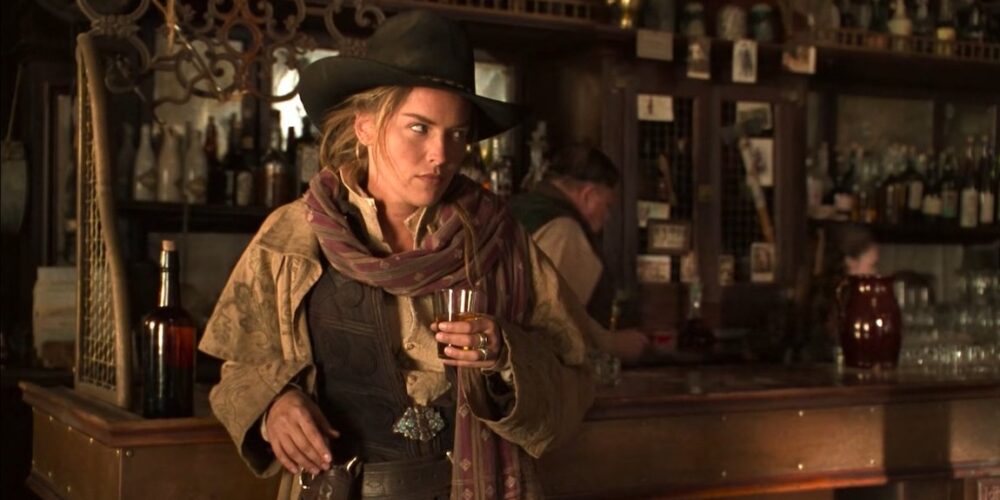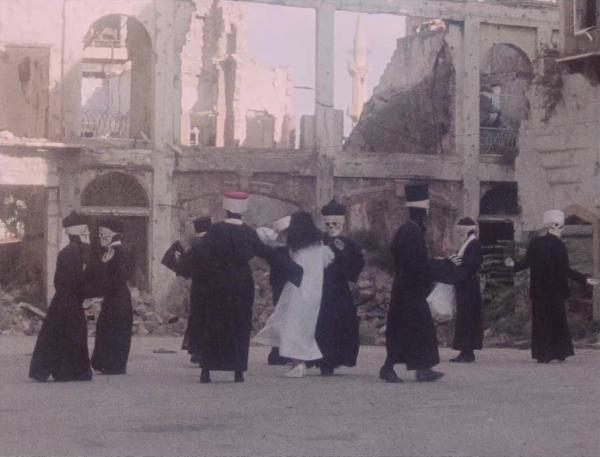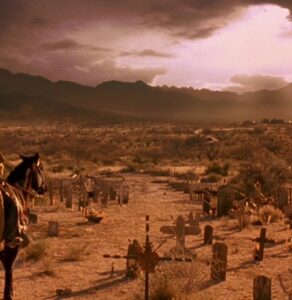
The Masterpiece that Almost Was: The Quick and the Dead
|Ryan Sanderson| You’re Sharon Stone. Congratulations. You’ve just achieved massive stardom with Basic Instinct. Now Sony’s come knocking with a metatextual riff on Sergio Leone Westerns, the Clint Eastwood Man With No Name archetype written for a woman. You sign on...
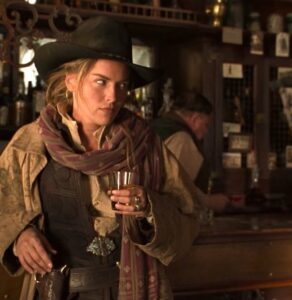
The Family Stone: How Sharon Stone’s Vision Shaped The Quick and the Dead
|Courtney Kowalke| Writing this piece made me confront the fact that I have a thing for cowboys.Not the lifestyle, not in practice—I hate feeling dusty, straw and most crop pollens make me sneezy, and I’ve been scared of horses since I was ten and one bit my hand while I was feeding it...
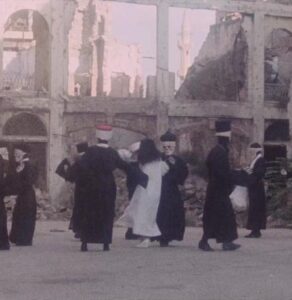
No Revolution Without Love
|Azra Thakur| Sometimes, I seem to feel a gravity rise from the depths of the ages throughout the world. In myself and in others, I notice a tendency to flee from new problems, to take refuge in churches or counter-churches, to rely on what has been achieved, to be complacent, to...

The Propaganda Will See You Now
|MH Rowe| Some documentary films feel more like a document than an act of documentation. They may set out to study this or that topic, but in the end, they seem themselves like objects to study. To put it another way, I am inadequate to judge the regional history and politics presented...

Olives to Ashes
|Zach Staads| See this film. If you take nothing else from this, please see this film. There may be things that don’t appeal to a contemporary palette, and it may be considered overly simplistic or overly artistic, depending on who you ask. However, the heart, the soul of...
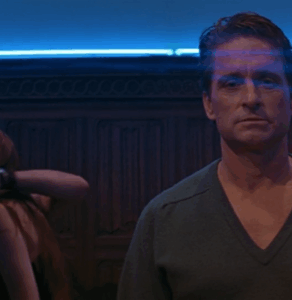
Male Hysteria; or, Fear of Magna Cum Laude Pussy
|Devin Bee| There’s a great gag in the show 30 Rock where we view the world through the eyes of Kenneth, the eternally cheerful and naïve NBC page played by Jack McBrayer. What Kenneth sees is not a world of flesh-and-blood creatures, but one populated entirely by muppets—

How to Get Ahead in Advertising and the Great British Special Effects Tradition
|Hannah Baxter| How to Get Ahead in Advertising (1988) has a title reminiscent of a screwball comedy, maybe something starring Katherine Hepburn and Spencer Tracy. He’s a staid account executive and she’s a free-spirited graphic designer working at the same advertising agency. Forced to collaborate on a big account...
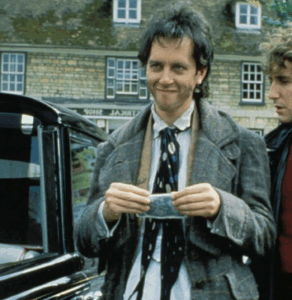
The Depths of Withnail and I: A Dark-Comedy Coping Mechanism for Poverty and Outgrowing a Friendship
|Dan Howard| When Bruce Robinson was living as a struggling artist in London, he drew inspiration directly from his own less-than-glamourous lifestyle for his first novel, and eventually first film. If an artist doesn’t come from money, it can be very difficult to climb their way out of poverty...
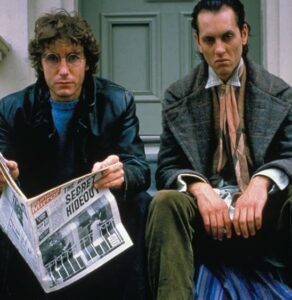
Squalor Stands the Test of Time: Bruce Robinson’s Withnail & I
|Penny Folger| “Fork it!” screamed actor Richard E. Grant, in the audition for what was to become his first role in a feature film: 1987’s Withnail and I. For Bruce Robinson, who was directing his first feature film, it was the way Grant delivered this line that sealed the deal...
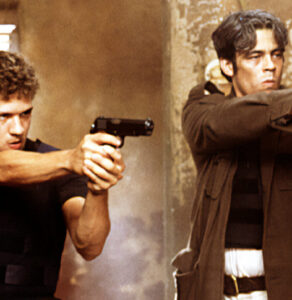
Doing the Man Dance: Way of the Gun
|Matt Clark| For the last 15 years, writer/director Christopher McQuarrie has essentially been in the Tom Cruise business. Eight of the ten pictures that list McQuarrie as a writer and the entirety of his directorial output (most of which now consists of Mission: Impossible films...
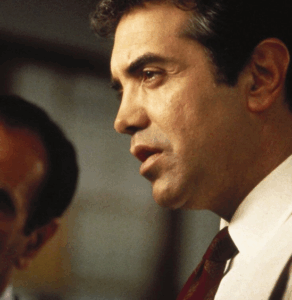
The Keyser Söze Memorial Lecture
|MH Rowe| Thank you for coming today. I want to say a few words about the strangeness of a film called The Usual Suspects, which was released in 1995 and over the course of the last 30 years has become a politely or even well-regarded classic of the “neo-noir” crime genre...

Anti-Fascist, All Fun: Disobedient Whimsy in Nobuhiko Ôbayashi’s School in the Crosshairs
|Chris Polley| Sometimes this place feels like a prison” is a sentiment I hear at least once every few years as a public school teacher—from students, yes, but also at least twice from fellow teachers. It’s also a haven for many kids who lack stability and routine at home. And yet it remains a source of so much stress and so...
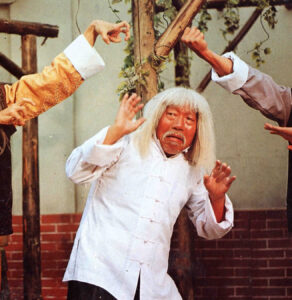
Chess Moves, Rice Bowls, and Full Throttle Vengeance
|Matt Clark| During the 1970s peak of kung fu film popularity, films from the Shaw Brothers’ legendary studio were known for lavish sets, period detail, and often outrageous kung fu styles. Rival studio, Golden Harvest, was primarily known for promoting international sensation...
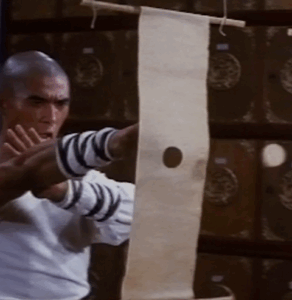
Interview: A Grandmother on Shaolin vs Lama
|Ben Jarman| Here is a new take from my mom on the film Shaolin vs Lama. The goal here again is to introduce her to genres she is not interested in and gather her thoughts. She is a movie “buff”, but she doesn’t venture much into genre films. Martial arts movies are definitely not her thing. She can handle a horror movie...
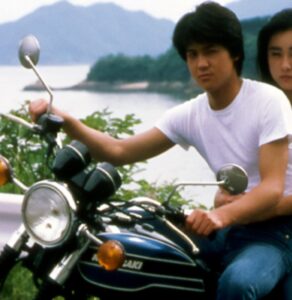
Memories of Summer
|Harry Mackin| Spoilers for His Motorbike, Her Island—watch the movie before you read this! We meet several different versions of His Motorbike, Her Island's protagonist, Koh. First, we meet Koh the narrator. This Koh begins his narration immediately following the opening images of the film, when an appropriately...

Be the Wind: Movie Motorbikes and the Power of Bōsōzoku
|Jake Rudegeair| Yeah guys, this film has motorcycles. And lots of other stuff too. Nobuhiko Ôbayashi's His Motorbike, Her Island (1986) is a treasure from the annals of motorcycle cinema, bent with nostalgic longing, light on its feet, washing between full color and monochrome classic.
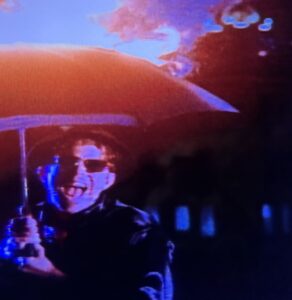
The Waits is Over: “Big Time” Finally (Kinda, Sorta) Brings Tom Waits Back to Minneapolis
|Chris Ryba-Tures| Y’all. After, like, 25 years of waiting, hoping, dreaming, I finally get to see Tom Waits in concert! Some of you have probably been waiting even longer. Don’t worry, you can come too. Get your ticket to see the mysterious junkyard troubadour, the skid-row Cyrano,
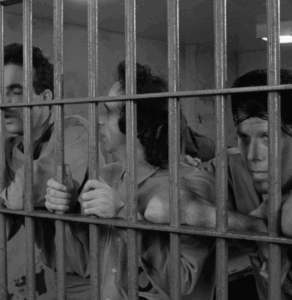
The Breathless Loitering of Down By Law
|Ryan Sanderson| In the first few minutes of Jean-Luc Godard’s 1960 classic, Breathless, Parisian bad boy Michel (Jean-Paul Belmondo) shoots a cop. The moment-as-scripted is very familiar. It’s a classic Hollywood film noir trope—the edgy criminal crosses a boundary from...
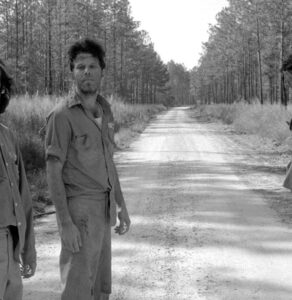
The Lyrical Loneliness of Down By Law
|Jackson Stern| Some of the best songs you can listen to when you’re at your lowest are the loneliest ones. When I was near the end of high school, I got my heart broken in a few different ways, like a lot of people do at that age, and I’d go for these long drives. Almost every day after school
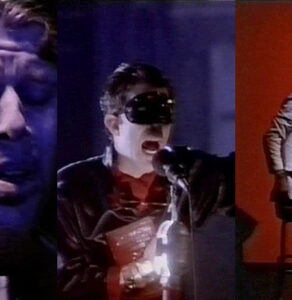
The Only 35mm Print of Tom Waits’s Big Time
|John Costello| When a character, on stage or on screen, breaks the fourth wall and another character notices and comments, something special happens. A skilled performer involves the audience as performers in the live performance. Unlike plays and fictional films, concert films...
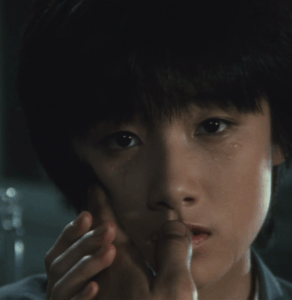
Of Teens and Time Travel: The Girl Who Leapt Through Time
|Dan McCabe| Time travel is a fantasy. While time travel stories often get lumped in with science fiction, there’s not much “science” behind it. While general relativity and time dilation theories support the possibility of moving forward in time, backwards time travel has about as...
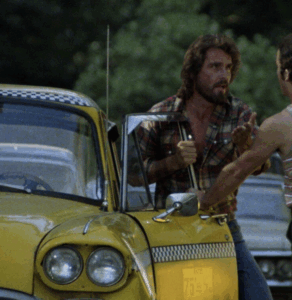
A Juggler, an Apple Farmer, and a Psychotic Slumlord walk into a bar in a Bankrupt City…
|Lucas Hardwick| In the hierarchy of entertainment juggling is somewhere between miming and magic outranking puppet shows but only slightly less compelling than street buskers (depending on what the busker is playing, of course). In case you’re wondering how low the bar...

A Hit Before It Was Made, And A Fairy Tale Ahead Of Its Time: How Nobuhiko Obayashi Made “House”
|Lucile Hanson| “How to describe Nobuhiko Obayashi’s indescribable 1977 movie House (Hausu)? As a psychedelic ghost tale? A stream-of-consciousness bedtime story? An episode of Scooby-Doo as directed by Mario Bava?” That quote is what opens up the description on the...
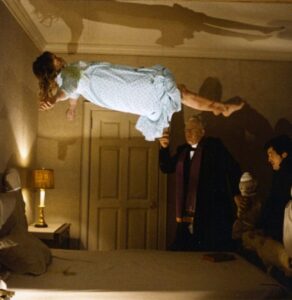
The Mesmerizing Horror of Essentially a Single Room Set in The Exorcist
|Allison Vincent| Honeymooning in order to see as many haunted houses as possible is, admittedly, a bit eclectic. Because we were COVID brides, my wife and I had to make a LOT of changes to our wedding plans, including moving...

